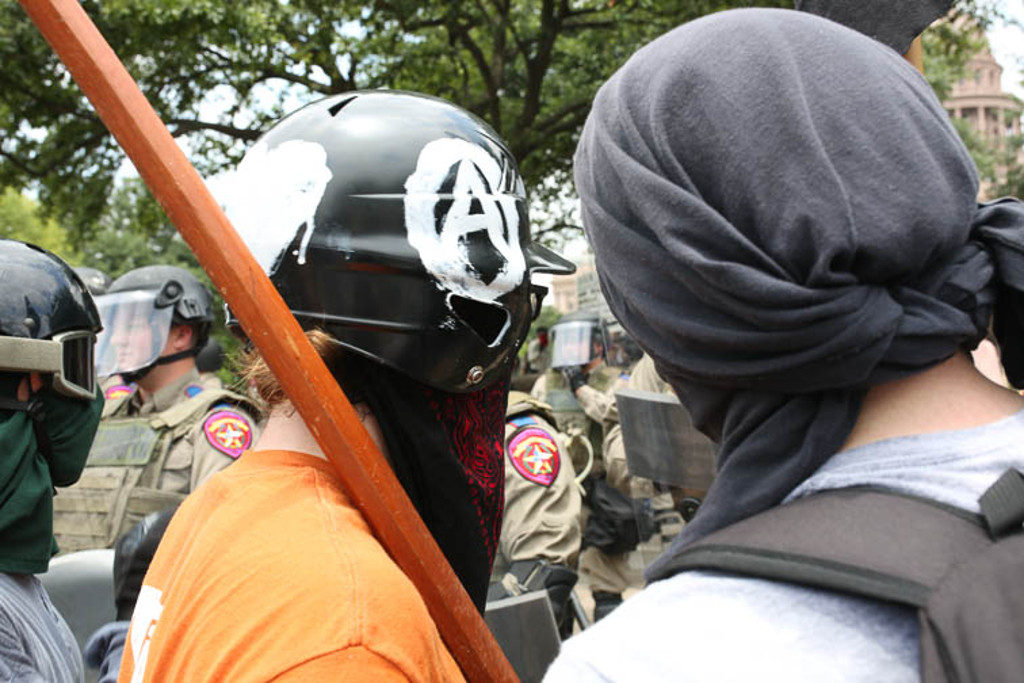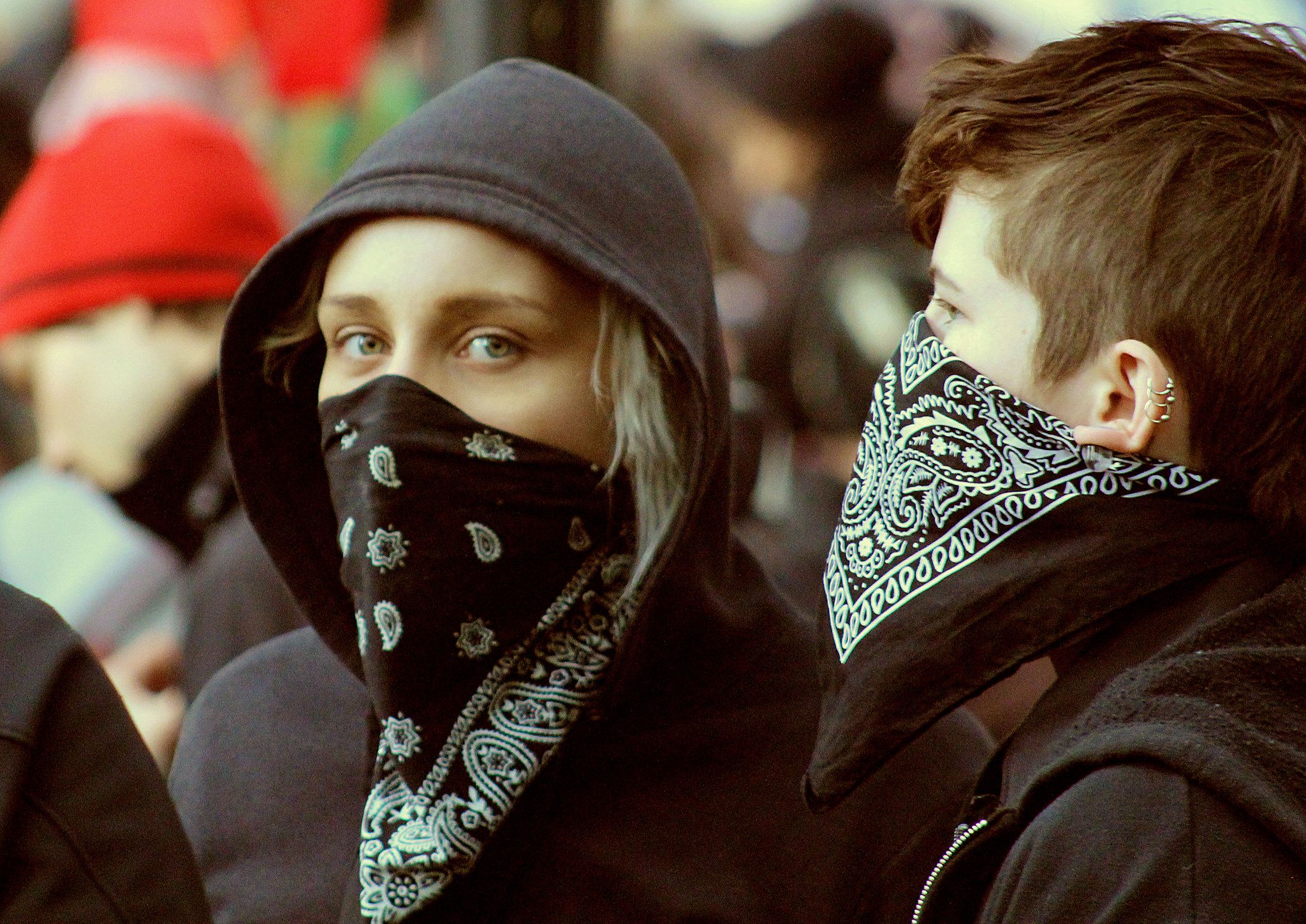First published in the “Protest 101” zine published by Oh Shit! What Now? and Crustacean Zine Library.
Black bloc are the masked activists in matching black clothes you may have seen at protests or on TV. There are many misconceptions about black bloc, especially about who they are and why they look the way they do.
One common misconception is that antifa (antifascists) and black bloc are one and the same, or that block bloc are all members of a particular activist movement. In reality, black bloc is not a movement but a tactic that has been used by diverse groups and movements over the years. Originally developed by autonomists in Europe, black bloc tactics were popularized in America during the protests against the World Trade Organization, including the famous “Battle of Seattle” in 1999.
By wearing masks and near identical clothing, activists in a black bloc protect their identities while creating a sense of unity and common purpose. While acts of property destruction by masked individuals tend to receive most media attention, one of the most common purposes of a black bloc is to protect other activists from attacks by police and fascists.
During the January 20, 2017 protests against the inauguration of Pres. Donald Trump, dozens of reporters photographed a burning trashcan after an activist lit it on fire. Meanwhile, few noticed when black bloc activists rescued a parent with a child and a disabled person from police who were indiscriminately pepper spraying a crowd that included journalists and bystanders along with protesters. In Charlottesville, antifascists in black bloc defended clergy members and people of color from nazis, while at protests in Berkeley, Austin, and elsewhere they’ve acted as volunteer human shields to keep violent fascists and out of control cops away from other activists less prepared to deal with their attacks.

Especially in the modern social media era, wearing masks — even without matching black clothing — can be an important protection. Activists who resist white supremacy, the police state, and injustice can, if identified, face consequences ranging from violent assaults by nazis to loss of employment. Undocumented immigrants might choose to mask up to protect themselves from immigration authorities.
A group of masked individuals in masks and matching nondescript clothing create collective anonymity that makes it harder to pick out any one person. In a pinch, activists can take off their black clothes and change into “civilian” outfits. But anonymity isn’t foolproof. Activists have been identified by their glasses, hair color, tattoos, even the type of backpack or footwear they are wearing.
While a black bloc seems like a mass of people acting as a single unit, in reality smaller groups within the bloc should work to maintain their autonomy. By remaining accountable to close comrades or affinity groups of allied activists, these subgroups within the bloc keep each other safe and mitigate the influence of undercover police or provocateurs, who may urge the crowd to take more extreme actions in order to give cops an excuse to crack down.
Black bloc is a versatile tactic, applicable to many different situations. However, it isn’t appropriate in every situation. Radical activists might choose to dress in everyday clothes in order to better blend in with large crowds when black bloc would attract undesirable attention, or cause unnecessary confusion among those unfamiliar with the tactic.
Remember, black bloc should never be confused with a movement, or with antifascism itself. It’s merely one possible tactic of many often used by antifascists and others looking to fight back against unjust systems and dangerous fascists (both in and out of police uniform).
Update/Correction August 19, 2019: Various people have contacted me to let me know instances of black bloc tactics being used in the U.S. prior to the Battle of Seattle, including both anarchists and radical queer rights groups. I’ve corrected this article to suggest the tactic was “popularized” by the WTO protests, rather than the origin of their use in the United States.
 What Is Black Bloc? Why Do Activists Wear Masks? by Kit O’Connell is licensed under a Creative Commons Attribution 4.0 International License.
What Is Black Bloc? Why Do Activists Wear Masks? by Kit O’Connell is licensed under a Creative Commons Attribution 4.0 International License.
Based on a work at https://kitoconnell.com/2017/09/06/what-is-black-bloc-why-masks/.
